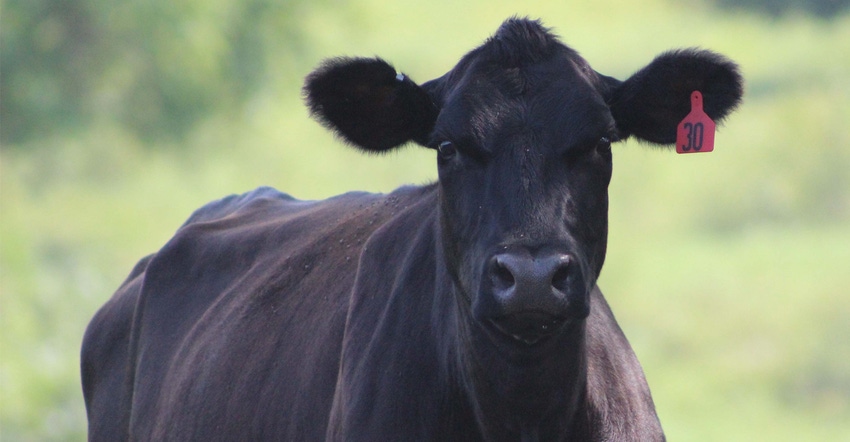August 17, 2021

According to the July 22 U.S. Drought Monitor, drought conditions are persisting across the Western and Northern U.S. In some states, cattle producers are facing the decision to cull cattle due to limited feed resources. Meanwhile, others in Kansas and other parts of the country, who have feed resources more available, may be considering adding cattle to their herds.
Culling and biosecurity were two topics of discussion on a recent Kansas State University Beef Cattle Institute Cattle Chat podcast.
Culling time
“Oftentimes producers cull cows in the fall, but mid- to late-summer can be a good time of year to early preg-check [pregnancy-check] those females and cull the open or short-bred ones,” says Bob Larson, a K-State veterinarian. Short-bred females are those that conceived late in the breeding season, according to Larson.
He says veterinarians are able to check for pregnancy status 40 to 50 days past conception, and if they are using ultrasound technology, then pregnancies can be dated at 30 to 35 days postconception.
“One reason to do that now is to identify the cattle that are going to leave the herd, and get them off the pasture ahead of when lots of cattle will be entering the marketplace,” Larson says.
Cattle are sold by the pound, so another consideration might be to hold onto those cull cows longer and give them additional feed resources to help garner a higher selling price, the experts say.
“Producers really need to look at the economics of that decision, because in a drought situation where the cows are thin and feed costs are high, it may not make sense to hold onto those cows longer and give them additional feed,” nutritionist Phillip Lancaster says.
Herd biosecurity
Conversely, if cattle are leaving the herd, producers may also be looking to add replacement heifers and cows to the ranch, and the experts say applying biosecurity measures will be key to maintaining herd health.
“Anytime there are new additions to the herd, we recommend a 15- to 30-day quarantine,” says Brian Lubbers, a K-State veterinarian. “This quarantine is especially important if you are bringing in outside cattle to a reproductive herd.”
The quarantine means the cattle have no nose-to-nose contact or opportunity for oral-fecal contact, Lubbers says.
While this quarantine will allow some diseases to appear if the cattle are contagious, it won’t show them all, according to Larson.
“There are some diseases that have persistent carrier states in which the animal doesn’t appear sick; but for a lot of those diseases, we have good tests that we can use to identify the carriers,” Larson says.
Two of the more common diseases for persistent carriers are bovine viral diarrhea virus and trichomoniasis, Larson says.
“Work with your veterinarian to figure out if you need to test your herd,” he says.
Lancaster also adds that knowing the health status of the source herd will help the producer and veterinarian make a herd health plan for those new animals.
To get started, Larson recommends producers refer to the bovine viral diarrhea (BVD) and trichomoniasis consult apps found on the Beef Cattle Institute website, ksubci.org.
Source: Kansas State University Beef Cattle Institute is solely responsible for the information provided and is wholly owned by the source. Informa Business Media and all its subsidiaries are not responsible for any of the content contained in this information asset.
You May Also Like




